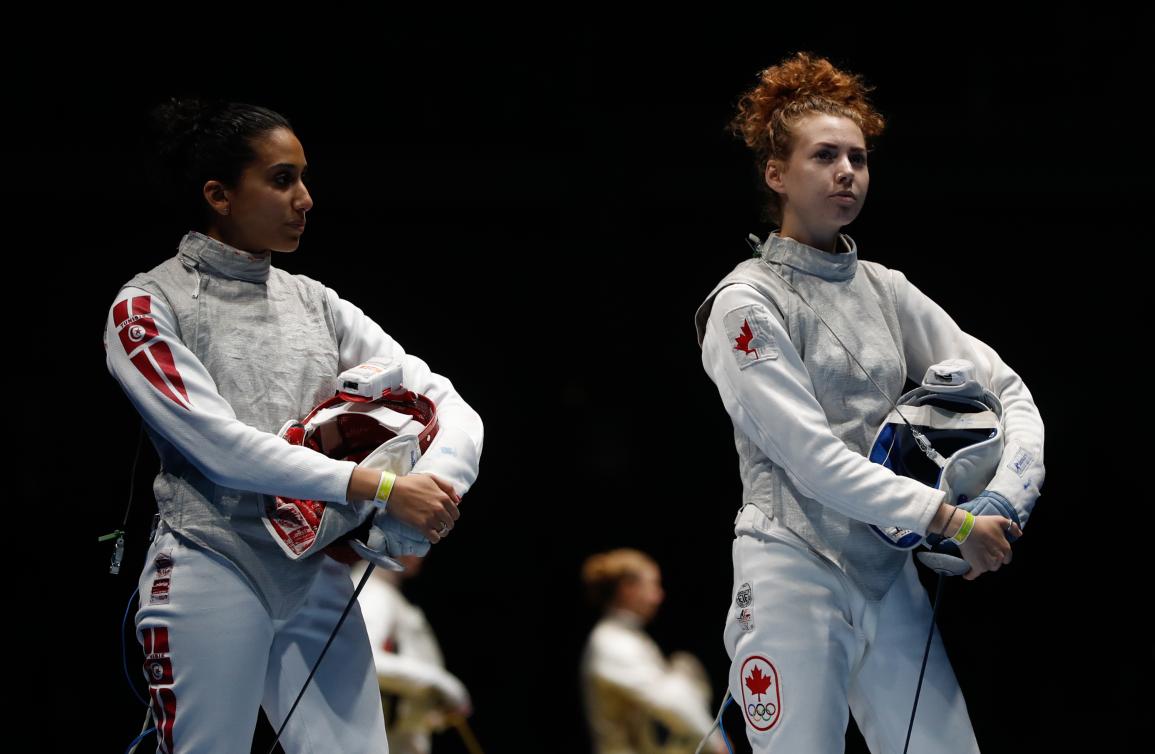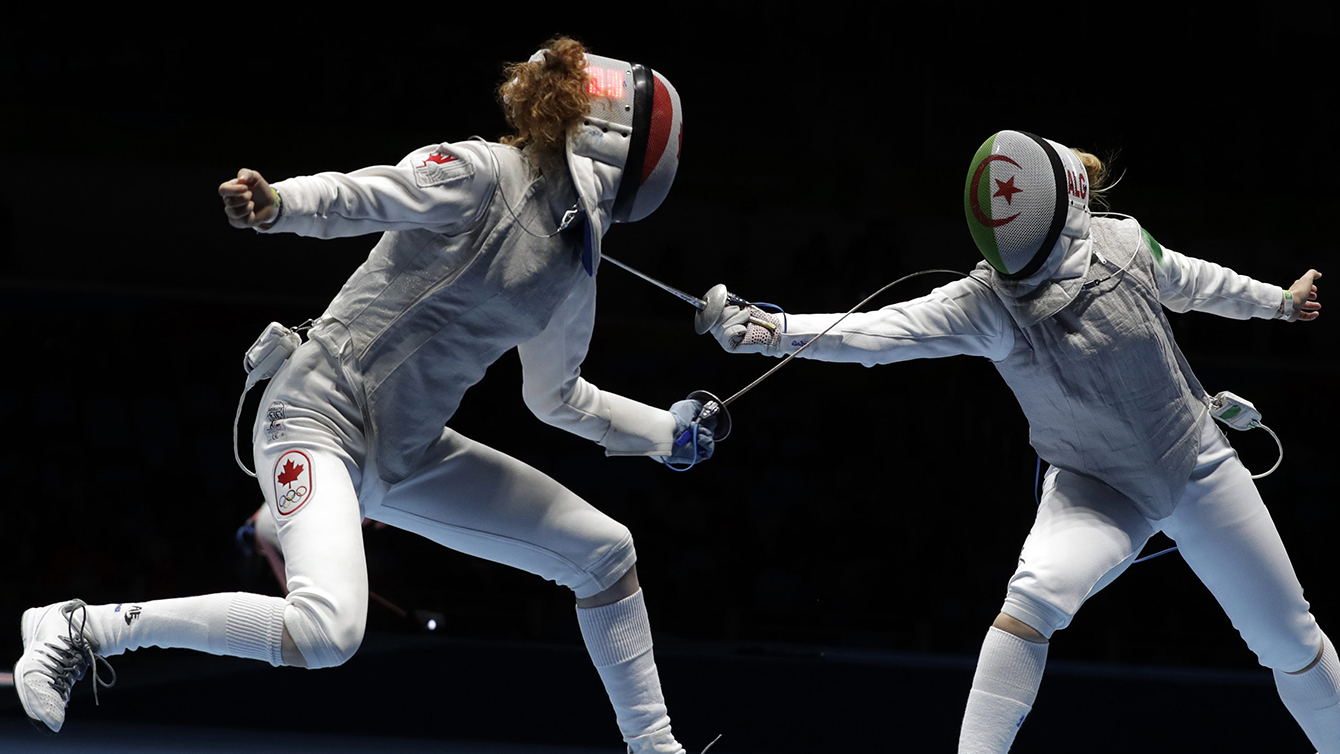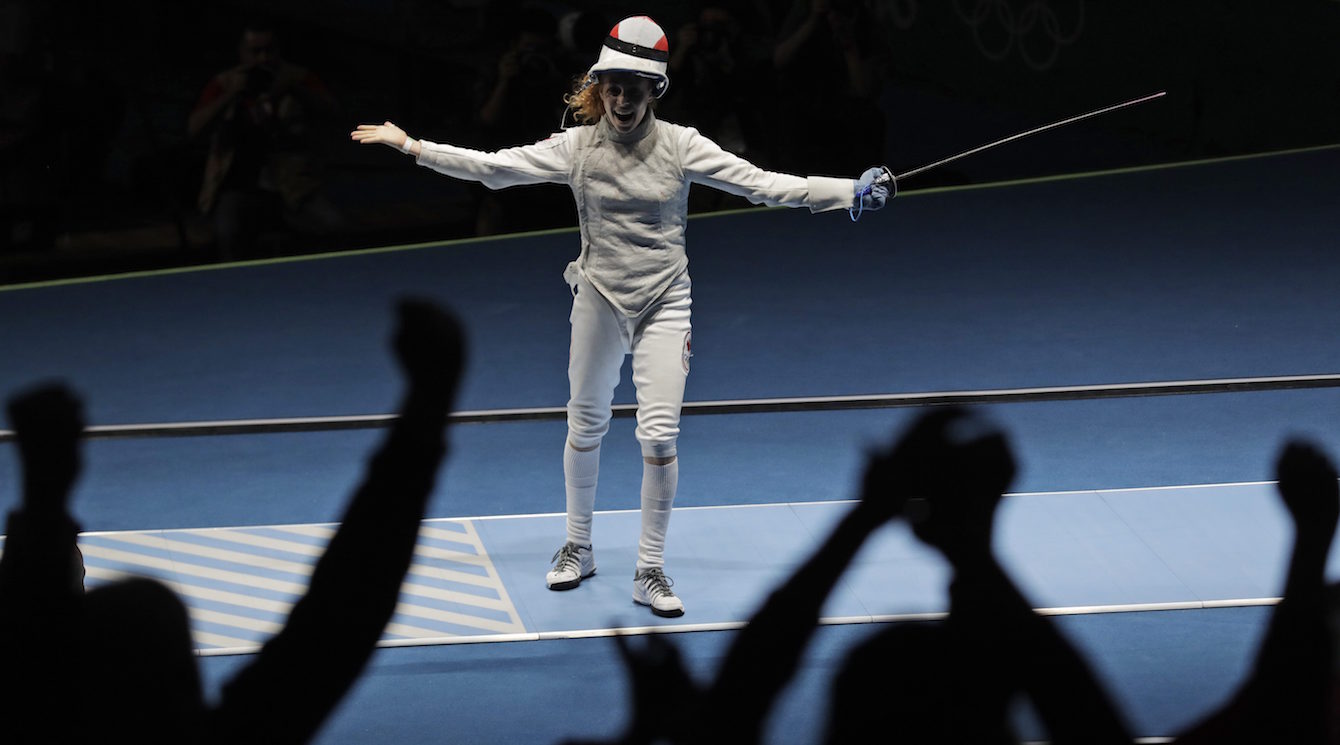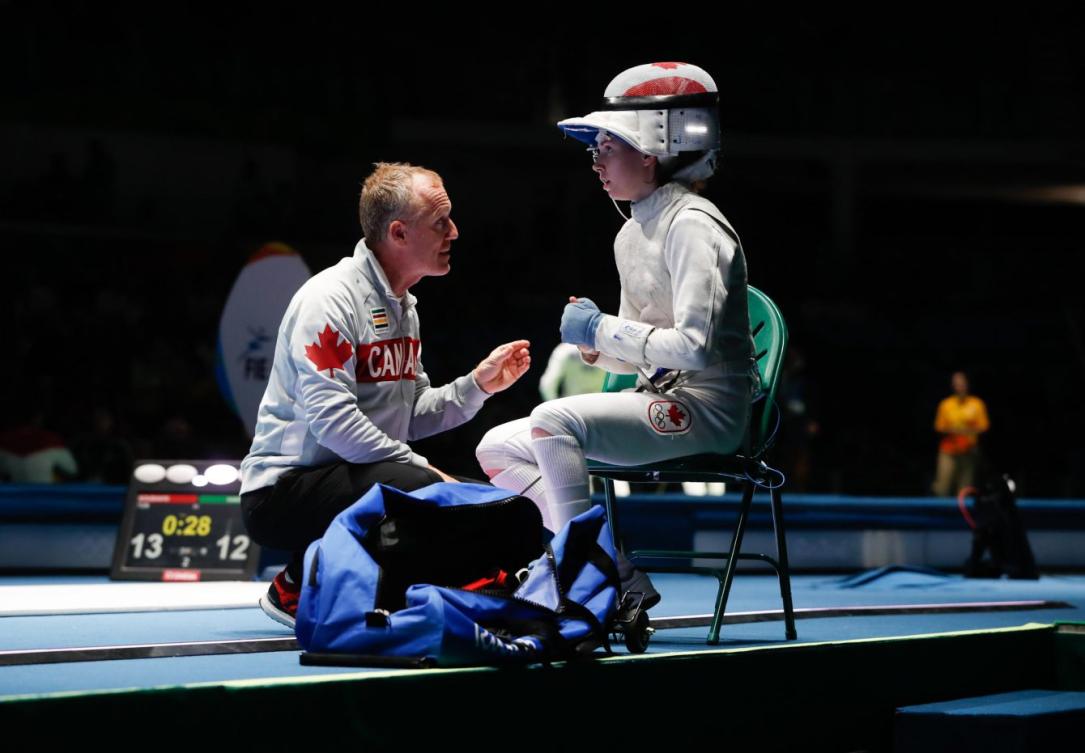Help Build an Olympian: Sparring with Eleanor Harvey
The Help Build an Olympian campaign has partnered with six Canadian Olympians. This Giving Tuesday, read their stories to learn about how the performance pillars propelled our athletes to Olympic success.
By the time she was seven years old, Eleanor Harvey knew she wanted to compete at the Olympic Games. Little did she know that at Rio 2016, at the age of 21, she would post Canada’s best-ever women’s individual foil fencing result, finishing seventh after defeating the world-ranked number one to qualify for the quarter-finals. But to get there, her family had to make a lot of sacrifices.

Eleanor Harvey competes at Rio 2016. Photo: Mark Blinch
“Just making the Olympics was one of me and my family’s proudest moments, but doing well and making history at the Olympics was completely something extra. Especially being 21, I didn’t even know I was going to make it. To do this and know that I still have another couple chances maybe to do even better, it’s a big confidence booster,” she says.
Eleanor began her athletic career as a runner. Then she fell in love with karate; but when she realized it wasn’t an Olympic sport, she transferred her skills to fencing at age 10, and soon began competing at the national level.
“I started going to a lot of local competitions in Canada, but I would have to fence with all the boys because there weren’t enough girls. When I was 10, I was fencing [in the] 12-and-under, 14-and-under, cadet, junior, and senior [categories], so I would have to do tons of competitions to get enough volume that I needed in order to get better.”

Eleanor Harvey of Canada, left, competes with Anissa Khelfaoui of Algeria women’s individual foil event at the 2016 Summer Olympics in Rio de Janeiro, Brazil, Wednesday, Aug. 10, 2016. (AP Photo/Andrew Medichini)
At the age of 12, Eleanor began attending North American Cups in the U.S., and throughout high school she would frequently fly to Europe to compete. She says there, “[Fencing] is much more popular. It’s more organized, well-funded, it’s taken a lot more seriously. It can be someone’s career path, whereas North American fencers are generally students or they have to work part-time to support themselves. So we definitely have a disadvantage in some ways.”
In middle school and high school, Eleanor would attend three or four competitions per month year-round—none of them local. “Sometimes we’d go to Europe twice in a month, which was a lot, especially being a high school student. Sometimes I would have to miss two weeks of school in a row for competitions. I would go to a senior world cup in Italy, then I would go to a senior world cup in Budapest the next week, and that week in between I’d just stay in Europe and train and do my homework.”

Eleanor Harvey of Canada celebrates after defeating Arianna Errigo of Italy in a women’s individual foil event at the 2016 Summer Olympics in Rio de Janeiro, Brazil, Wednesday, Aug. 10, 2016. (AP Photo/Andrew Medichini)
The trouble was, because of the lack of funding, Eleanor’s family had to pay for everything until she became a carded athlete in grade 12 and then received a full-ride NCAA scholarship to Ohio State University.
“It was just my mom that was supporting me to go to these competitions. First we ended up renting out all the rooms in our house to students. But then that wasn’t enough so we actually had to sell my house and move into a studio apartment. My mom had to use all her savings and go into a lot of debt because it was extremely expensive.”
On top of funding travel and coaching, which Eleanor said ran at about $150 per week, her mom had to pay for her fencing equipment. A foil sword is about $170, and she normally brings at least three to tournaments. As well, a mask and gear runs upwards of $1,000.

Eleanor Harvey sits between periods of her quarterfinal bout of the women’s individual foil at Rio 2016 (Photo: COC/Mark Blinch, August 10, 2016)
“That’s why there aren’t a lot of good fencers in Canada. If you don’t have a lot of money and you’re not willing to make sacrifices, you’re not going to get good. And you have to go to all these competitions in order to get good. So that’s one of the problems with Canadian fencing is it’s not funded so it stops people from being good unless they put literally all of their energy into creating a fencer.”
Eleanor says both she and her mom believe the cost of competition was worth the sacrifice since she achieved her childhood goal of competing at the Olympic Games. Her next objective? “Qualify [for Tokyo 2020] with my teammates. I think we could have a really good chance of making history again but in a team competition. It would be cool before I retire to medal at an international World Championship, World Cup, Olympics, anything like that because we’ve never medalled in women’s foil at a world cup.”
After winning Pan Am women’s team foil gold at Toronto 2015 and making history at the Rio Olympic Games at the age of 21, few can doubt that Eleanor Harvey will spar her way to victory.

 Canadian Olympic Foundation
Canadian Olympic Foundation


